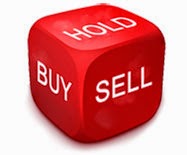Investment Strategies – David Dreman
pages, the author had summarized it into 41 rules. I will publish the rules in my next post. For now, instead we will discuss key strategies to buy and sell a stock directly taken from the Contrarian Approach.
- Low Price to Earnings (bottom 40% stocks)
- Low Price to Book
- Low Price to Cash Flow
- Low Price to Dividend yield
- Diversify. Hold at least
20-30 different stocks from different industries.
Financial
Analysis
- Strong financial position. current ratio,
cash etc - As many favourable operating and financial
ratios as possible. ROA ROE ROC - Higher earnings growth than S&P (STI) in
immediate past, and likelihood that it will not plummet in the near future - Earning estimate should always be
conservative - An above average yield which company can
sustain and increase
Over-reaction
over-reaction in the market resulted from a temporary political or financial
crisis. How should we react? – to buy right
after the plunge or wait till dusk clear? Contrarian approach suggests that we do not be
a hero and charge into the initial panic. It pays to sit on the side-line for a
while. In all probability, you will get plenty of chances to buy it cheaper in
the next 90 days. When there is negative surprise, the poorer the results, even
first rate companies are sure to fall for a while.
Normally prime growth company has high debts and that is when Financial Analysis
dislike.
company! Initially in 1997 when you say Tech stocks PE 20 is high, but how can
you imagine that it can grow to 50-60 or even 100 later.
at PE of 40/50 then drop to 25/15/10 as investors change their mind on value.
is no guarantee that market will recognize or spot it. May linger in the dumps
for years.
in its rise, it is accompanied by even more good news. You start to
ponder should I sell now, because you may think that it is likely that the
stock may go higher to $2, then to $2.50 then to $3.00. Yet, sometimes the
reverse can be true! It is very common to see Investors riding the stocks all the way to its high
and ride it all the way down again.
a sell point. In the above example, if your pre-set price is $1.50 after buying it at $1.00 once it reaches $1.50, you should sell the stock immediately. Do not be greedy. Grit your teeth, brace yourself
and get rid of the stock. You are probably unhappy when later it goes up, but you
should not be bothered. Remember that you already reap your profit, unless there are
other reasons you are 100% sure that the stock price will rise
later.
Imagine you bought a stock at PE 10 compare to the industry average of 15. With earnings unchanged, PE rises to 20 after announcement of some good news. Contrarian approach suggests even with the impending bright prospects, we should sell the overvalued stocks and replaced it by another low PE stock.
2.5 to 3yrs is adequate waiting period. For a
cyclical stock with fall in earnings now, it may take 3 to 3.5yrs before its
right time to sell. But you still need to have a plan and stick to your time
frame. Do not be stubborn to hold forever.
Do not sell your stock just because it has a poor
Quarter of results, due to one-off temporary reason and PE becomes large. On
the contrary, if the fundamentals of the company are affected such that the
outlook is bleak, sell the stock no matter how painful it is!
Sell to rebalance portfolio
sell to rebalance your portfolio! While doing so, please avoid dangers of overtrading and
incur on hefty trading charges.
When to Hold?
Relevant to Book value
Hold Forever
Warren Buffett once said “Our favourite holding period is forever”.
your portfolio. For instance, you may classify your stock portfolio,
into long term (>5 years), mid-term (3-5 years) and short-term (1-2 years).
The long term group normally belongs to “blue chips” with very strong fundamentals with slow and steady growth yoy, that
you consider holding it as long as you can. The
mid-term ones are probably cyclical stocks or stocks with a mid-term aggressive
growth outlook. The short-term stocks probably inject adrenaline and make your
investments livelier.
low PE, PB, PCF, High dividend approach. However it is definitely not easy to
find a stock with all the four characteristics. A combination of 3 with solid
fundamentals and growth opportunity may well justify the buy call.
jump into the plunge. Probably 90 days suggested by Contrarian approach is way too long. For me, as long as the price plummet to a level that justify a low PE, PB, PCF, High Dividend over its peers, it is fine to take the buy position.
over-value the stock and the fundamental of the business deteriorate, let go of
the stocks with no emotions attach.






I’m now not sure the place you are getting your information, but good topic. I must spend a while finding out more or understanding more. Thank you for fantastic information I used to be searching for this info for my mission.
Hi Buy Sell Signals,
Thanks for the comments and compliments.
My info was via wide range of reading and my own personal thoughts and experiences. If there is any similarity, I can assure it is pure coincidence.
🙂